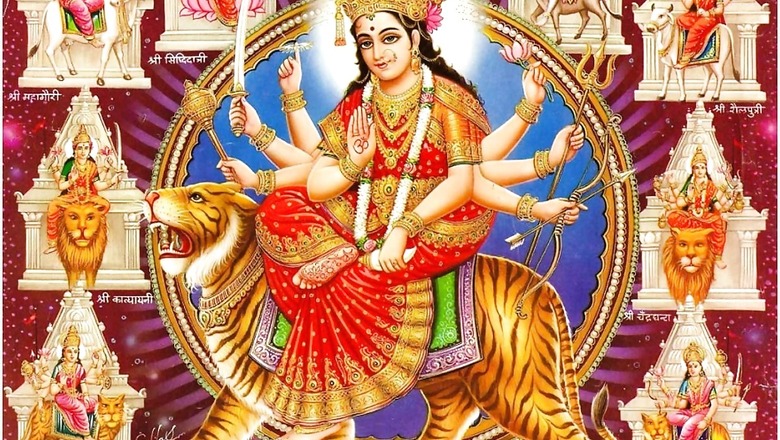
views
Different avatars of the Goddess Durga is worshipped during the nine days of the Navratri festival. Devotees dress up in different colours for each day. The nine colour pattern of Navratri has great significance. The order of the colour can vary each year, however the colour will remain the same.
Here are the vibrant colours of Navratri and the meaning behind each fascinating colours:
1. Grey: Pratipada, the first day of the festival, will be represented with grey colour. The colour symbolises the worship of Goddess Shailputri. Grey signifies understanding and peace. It also means the destruction of evil.
2. Orange: The orange colour on the second day or Dwitiya symbolises the worship of Goddess Brahmacharini. The colour signifies energy and happiness. It also refers to tranquillity, brightness and knowledge.
3. White: On the day third or Tritiya, Goddess Chandraghanta is worshipped. The day will be filled with white colour which represents peace, calm, serenity and purity. It also means innocence and goodness.
4. Red: Goddess Kushmanda is worshipped on the fourth day or Chaturthi. She is dedicated to the red colour which symbolises energy, love and creativity. Red stands for passion, anger and auspiciousness.
5. Royal Blue: Panchami, the fifth day, is well portraited with the colour Royal Blue. The devotees worship Goddess Skandamata. The colour represents the divine energy, superiority and intelligence.
6. Yellow: Goddess Katyayani is worshipped on the sixth day or Sashti. This day must be adorned with a yellow colour which symbolises happiness, freshness, brightness and cheerfulness.
7. Green: On the seventh day or Saptami, Goddess Durga in the form of Kalaratri will be worshipped. The colour green signifies growth, positivity and beginning. It also refers to Mother Nature and its nourishing qualities.
8. Peacock Green: Ashtami or the eight-day is the peak of the Navratri where Goddess Mahagauri is worship. The peacock green colour is the colour of the day. It represents the wishes and desires that get fulfilled.
9. Purple: On the last day or Navami, Goddess Siddhidhatri is worshipped. Purple colour represents beauty, ambition and goal. It also symbolises integrity.
Read all the Latest News and Breaking News here




















Comments
0 comment